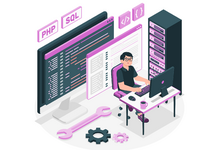It became clear that innovations were needed to make the sector more effective, and Artificial intelligence (AI)could profoundly influence healthcare. As mentioned by Dr. TedrosAdhanom Ghebreyesus, Director-General of the World Health Organization, only after the spread of COVID-19 did it become clear that countries did not have the necessary capacity to collect and use health data, especially in an ongoing crisis. One of the first AI responses to the global pandemic was the collaboration of TytoCare and Israel’s Sheba Medical Center. They provided patients with special stethoscopes that listened to their hearts directly in their homes and transmitted images of the patient’s lungs to the special care system to save diagnosis time.
What is artificial intelligence in healthcare?
Hospital staff and doctors can get reliable, data-driven CDS (Clinical Decision Support) thanks to machine learning.En particular, AI technologies can effectively analyze medical records and images, as well as clinical trial data. As a result, healthcare organizations can improve both the speed and quality of diagnoses, saving more lives.
How AI is changing healthcare?
There are several benefits of AI in healthcare such as the automation of tasks, faster and more effective diagnoses, and safer surgeries. For example, wearable health technology that uses custom software product development such as AI analyzes data and informs the user and healthcare professional of potential health-related risks and issues. Fitbit, one of the most notable names in the industry, has developed an advanced Sense health watch to track parameters in real-time such as oxygen saturation, skin temperature, stress level, high heart rate or low respiratory rate, sleeping and waking up, snoring, complexion and even menstrual health. The customer obtains the valid data directly in the Fitbit application installed on a smartphone and can share the data with a healthcare professional for further consultation or diagnosis. Another successful example of applying AI in practical surgery is the robot developed by Borns Medical Robotics. You can perform minimally invasive surgeries remotely. The robot can be especially useful for performing surgeries in isolated areas, such as those affected by war. London medical technology company Digital Surgery, for its part, has introduced artificial intelligence that guides surgeons through each step of an operation, significantly reducing the possible fatal outcome. One of the cases of brilliant incorporation of AI into healthcare dates back to 2016. University of Iowa Hospital and Clinics Implemented AI custom development services in its surgical procedures. Predicts the likelihood of infection during surgery even before the doctor closes the wound. As a result, the hospital has reduced postoperative infections by 74% and saved $1.2 million. Insider information states that around 30% of healthcare expenses are related to administrative tasks. AI facilitates insurance pre-authorization as well as quick checking of unpaid bills, helps process patient records, and thus simplifies the workload of hospital staff.
Examples of AI in healthcare
Artificial intelligence for healthcare is about to revolutionize the sector and help healthcare professionals face the challenges ahead. Here we have selected the most outstanding real-life examples of AI in healthcare.
Machine learning y deep learning
In healthcare, machine learning techniques can be applied to many innovations. For example, according to Portal Mercury DataScience, machine learning(ML) is expected to significantly improve central nervous system clinical trials, given the difficulty of diagnosing the progression of CNS diseases. Machine learning is capable of making the most accurate predictions of future outcomes using rule-based logic and pattern recognition. This, in turn, reduces time and costs in executing clinical trials. Another successful example of ML and DL (deep learning) in healthcare is Subtle Medical. This company provides sharper medical images to radiologists. Their SubtleMR product blocks noise from images, focusing on areas such as the head, neck, breasts, and abdomen. As a result, radiologists acquire higher-quality images. Deep learning improves clinical practice, in particular, DL algorithms are widely used for the detection of diabetic retinopathy, for example, by building a Convolutional Neural Network. Aravind Eye Hospital will be able to estimate the severity of the patient’s blindness by simply observing the eye. Furthermore, as indicated in the study published in Health IT Analytics. DL-based CNNs (convolutional neural networks) identified the dermatological disease melanoma with more than 10% accuracy than experts.
Robots físicos
Robots have been around for a long time and perform a variety of actions, from lifting goods to delivering supplies. Chatbots de AI are perhaps the most popular. For example, since 2000, surgical robots that serve as “reinforcement” for doctors have been approved in the United States. For example, they can suture wounds more precisely or create invasive incisions. Among the most common surgical interventions involving physical robots (surely, important decisions are still made after doctors) include prostate, gynecological, as well as neck and head surgeries.
Diagnostic and treatment applications
Artificial Intelligence was first applied to diagnosis and treatment in the 70s with MYCIN-.Diagnosed Infections of bacterial origin transmitted by blood. However, he stayed at Stanford and did not reach clinical practice due to a lack of power. The situation has changed radically with custom business software development advances. Almost every week, leading AI companies launch AI applications in healthcare for diagnosis and other medical treatments to ensure results that are as accurate or more accurate than humans.
Virtual reality in healthcare
Virtual reality solutions allow patients and healthcare professionals to interact with simulated environments. This may involve pain treatment and rehabilitation, as well as surgical training. And if the global healthcare VR market estimate is approximately $2.07 billion in 2022, by 2026 it is projected to reach $9.25 billion, according to ReportLinker.
VR can be applied to healthcare AI in several ways:
- Medical education: Theoretical learning is supported by detailed 3D medical models. Most of the time, it will be applicable in learning anatomy.
- Medical Training: By changing the simulated environment in a VR application, users virtually participate in a training scenario. The most common cases of VR medical training include simulating medical procedures, testing medical equipment, and simulating emergency cases.
- Surgery: VR more quickly reduces functional skill deficiency. It is used in surgical training and pre-surgical planning.
- Pain Management: VR diverts the patient’s attention, decreasing extreme discomfort and pain level and minimizing the use of pain medications, thereby reducing healthcare expenses. As highlighted in Net Health, VR allows patients to experience their preferred interactive environments, thereby helping them combat pain and discomfort. In most cases, the effectiveness of VR in pain management is vivid across acute pain, chronic pain, stress, mental health, and pain from medical procedures.
The future of healthcare with AI
We believe that artificial intelligence will play a huge role in the healthcare sector. The development of artificial intelligence solutions companies for healthcare and the integration of AI into hospital systems will lead to dramatic changes in the health outcomes of hospitalized patients.
However, the biggest challenge for artificial intelligence in healthcare is not whether the applications will be useful and powerful enough to deliver accurate results, but ensuring that they are adopted into everyday clinical practice. Regulations must approve AI applications, be taught to doctors, and be accepted by the population.
Although we can expect palpable use of artificial intelligence in clinical practice within five years, it is obvious that AI systems cannot completely replace human clinicians. On the contrary, they will only improve and facilitate healthcare.






